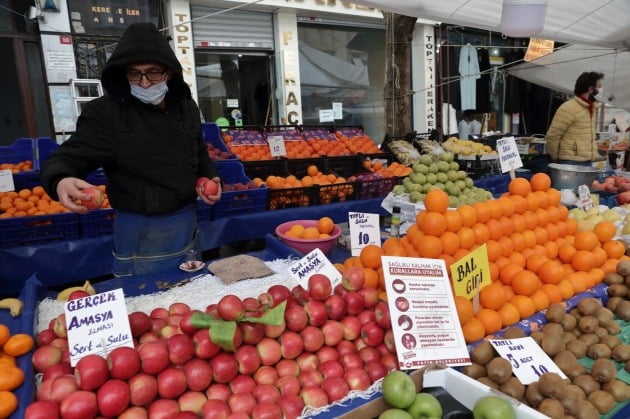
Photo = Reuters
Table prices are soaring all over the world. As food prices rise much faster than overall inflation and income levels, there are concerns that the number of people suffering from hunger and malnutrition will increase significantly.
According to Bloomberg News on the 1st (local time), food prices have risen significantly this year in emerging markets (emerging markets). In Indonesia, tofu prices have risen 30% over two months. In Brazil, the price of black beans, a staple food, soared 54% in a month. Russian sugar prices rose 61% year-on-year.
Developed countries, such as the United States, Canada, and Europe, are also showing a clear rise in food prices. According to the U.S. Consumer Price Index (CPI) data in January, the price of food consumed by U.S. households rose 3.7% from the previous year. Compared to the 1.4% increase in CPI over the same period, the rise in food prices is more than twice the rate of overall inflation. Last month, the Food and Agriculture Organization of the United Nations (FAO) announced in January that world food prices hit a six-year high since August 2014.
There are three main reasons for the recent rise in food prices. The first is the supply chain cracking caused by the novel coronavirus infection (Corona 19). Blockade measures were issued in various places, preventing seasonal workers and logistics from moving. According to the United Nations Conference on Trade and Development, last year’s global ship volume declined for the first time in 11 years compared to the previous year. In recent years, several containment measures have been lifted, but the logistical bottleneck has become serious as the blocked transport routes have opened. Because of this, the increased logistics cost is also reflected in food prices.
Climate change is also a major cause of soaring food prices. As climate change appeared in various parts of the world, the crops that were previously grown in large quantities were severely damaged. In addition, global inflation is supporting food prices. Sean Connolly, CEO of Conagra, a US food company, explained, “The prices of products required for food production, such as cardboard packaging materials, have all risen.
Experts point out that this trend has led to a serious problem of food security for low-income families. Feeding America, the largest hunger relief agency in the United States, estimated that 13.2 million people suffer from’food insecurity’ in the United States after Corona 19. This is a 35% increase from 2018.
Low-income groups with high Engel index (the share of food expenses in household consumption expenditure) are expected to be hit hard. According to the U.S. Department of Agriculture, households in the lower quintile of income spent 36% of their income on food in 2019. This is why it is pointed out that if food prices rise further, low-income people may spend nearly half of their income for food. Gary Hench, head of nutrition policy at the U.S. Food Research Action Center, said, “As food prices rise, it will be difficult for low-income people with limited budgets to get enough healthy food.” .
The United Nations World Food Program (WFP) announced at the end of last month that the number of hungry people in four Central American countries, including El Salvador, Guatemala, Honduras, and Nicaragua, has quadrupled over the past two years. In 2018, there were 2.2 million people, but this year, about 8 million people across four countries were counted to be hungry. WFP said 1.7 million of them are in an urgent need of food aid. For this reason, the number of immigrants trying to migrate to other places such as the United States is also increasing in Central America.
The rise in food prices is expected to continue for a while. “Food prices will continue to rise for at least a year and a half,” said Phil Lempert, founder of Supermarket Guru, a food market intelligence company. Sylvain Charlevois, director of the Agricultural Food Analysis Research Institute at Dalhousie University in Canada, said, “The situation is only going to get worse.”
David Uvilaba, an associate professor of economics at the University of Sydney, said, “In developed countries, food processing rates are relatively high, and the supply chain between companies is more sophisticated. The price has no choice but to increase,” he analyzed.
Reporter Sun Han-gyeol [email protected]
Ⓒ Hankyung.com prohibits unauthorized reproduction and redistribution
